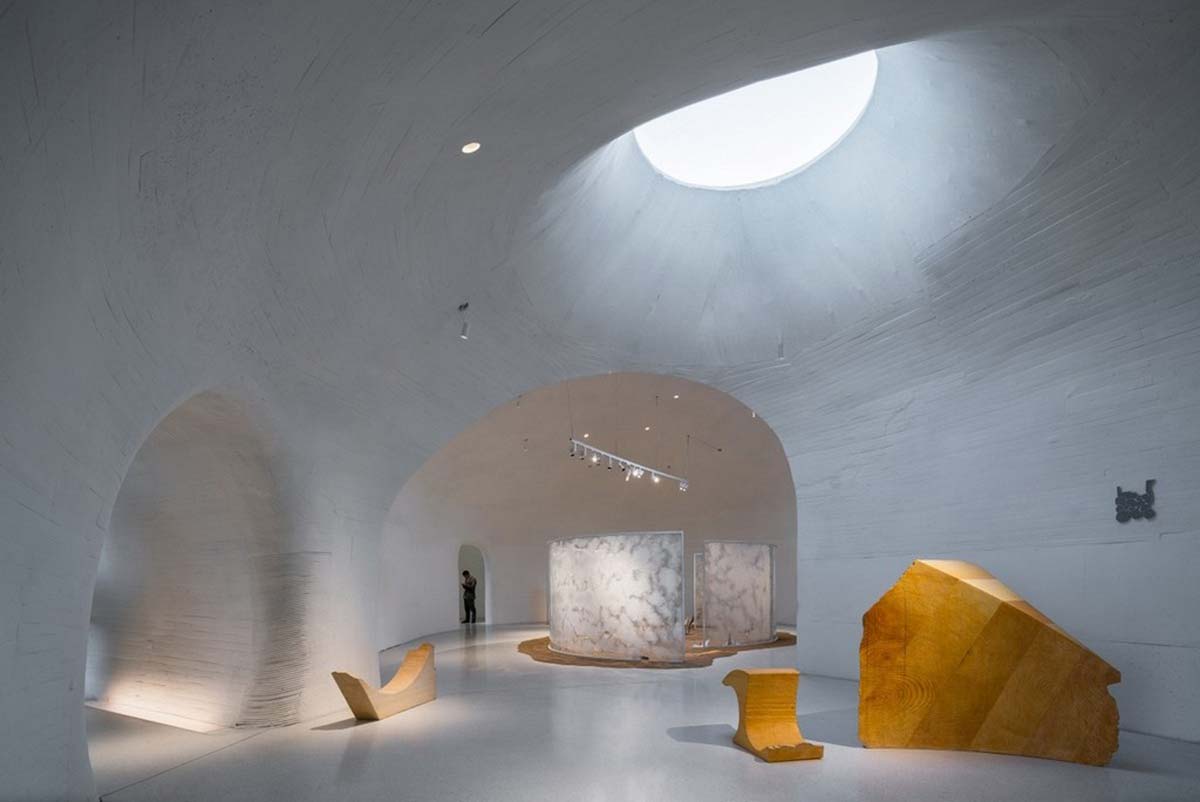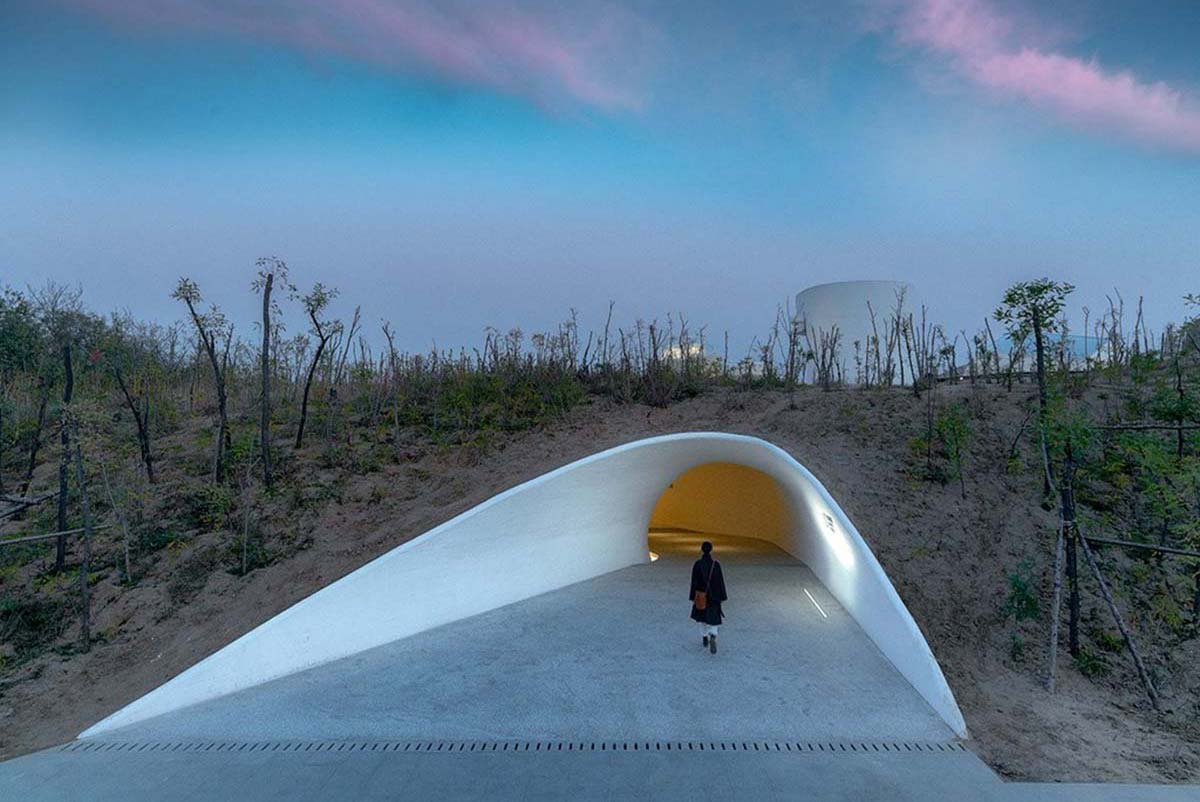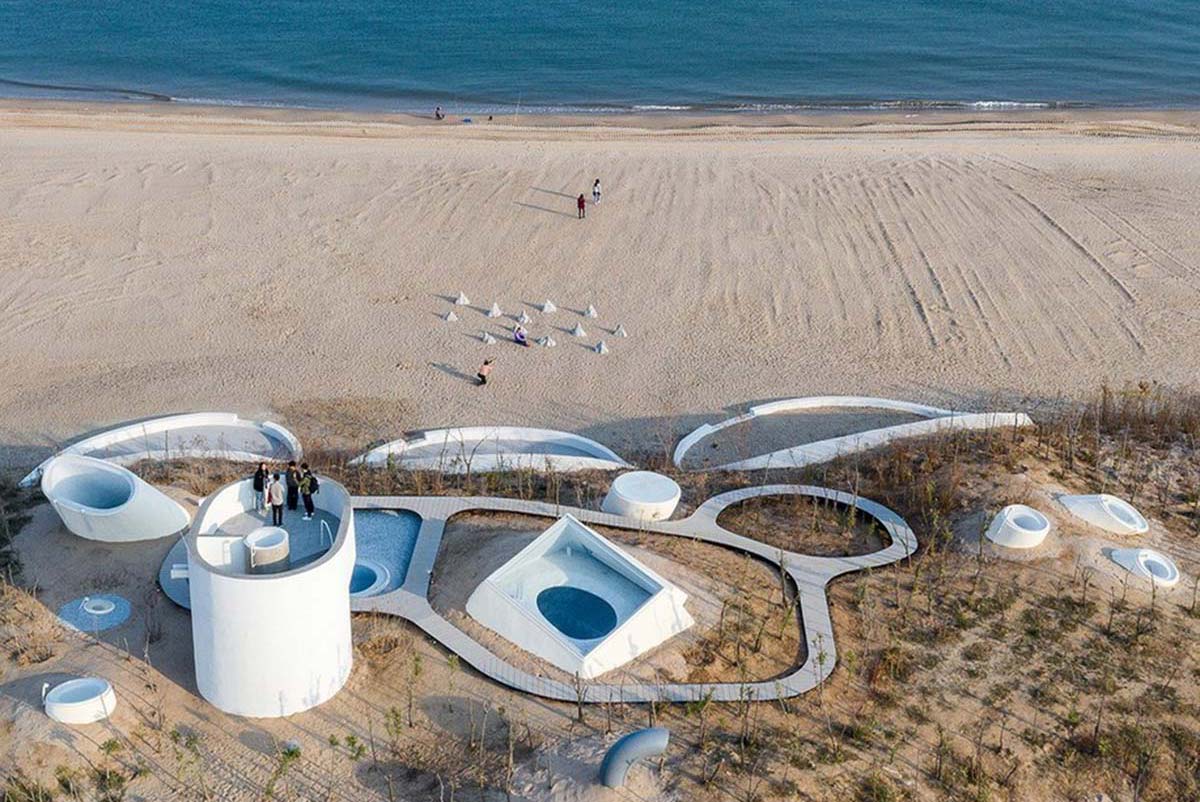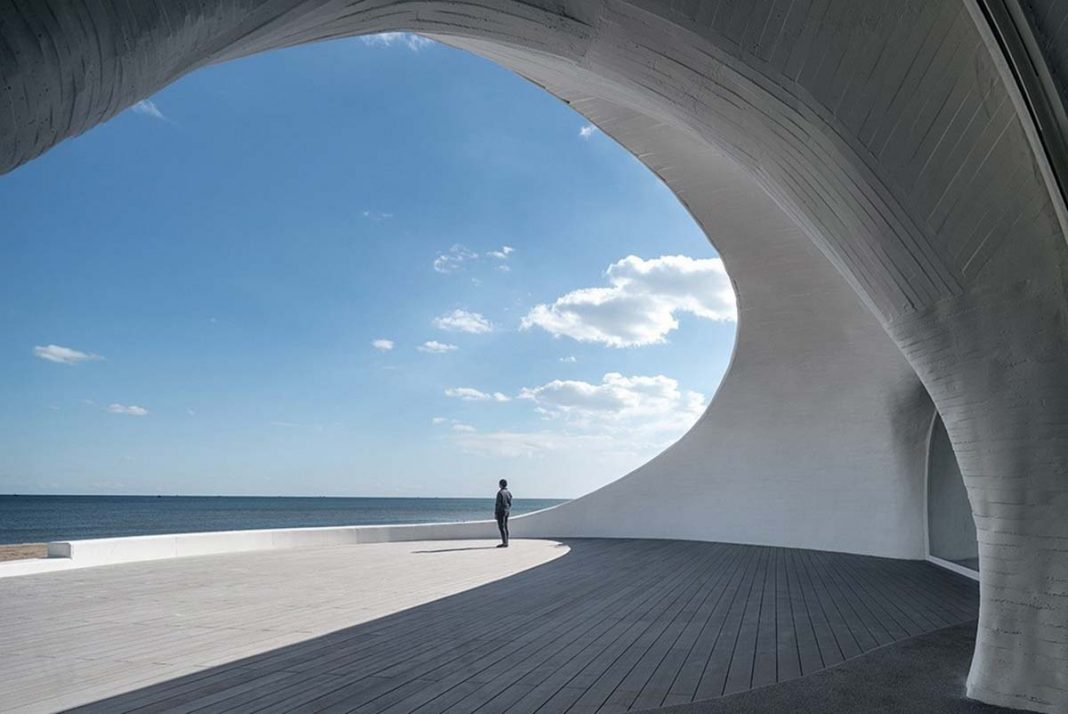Countless years of wind have pushed the beach’s sand into a dune along the shore several meters high, stabilized by low-rising shrubs and other ground cover. Inspired by children’s tireless digging in the sand, the museum lies beneath this dune. “Digging” creates a series of interconnected, organically shaped spaces which, enveloped by sand, resemble caves—the primeval home of man, whose walls were once a canvas for some of humanity’s earliest works of art. Hidden between the sea and the sand, the design of the Dune Art Museum is simple, pure, and touching—a return to primal and timeless forms of space.

The decision to create the art museum underneath the dunes surrounding was born out of both the architects’ deep reverence for nature and their desire to protect the vulnerable dune ecosystem, formed by natural forces over thousands of years. Because of the museum, these sand dunes will be preserved instead of leveled to make space for ocean-view real estate developments, as has happened to many other dunes along the shore.

A series of cell-like contiguous spaces accommodate the Dune Art Museum’s rich and varied programs, which include differently-sized galleries, a community room, a café, and a roof terrace. After passing through a long, dark tunnel and a small reception area, the space suddenly opens up as visitors enter the largest multifunctional gallery. There, a beam of daylight from the skylight above silently yet powerfully fills the space. Looking through different openings framed by the building, museum-goers can observe the ever-changing expressions of the sky and sea throughout the day.

Photo credits © Wu Qingshan, Ni Nan









